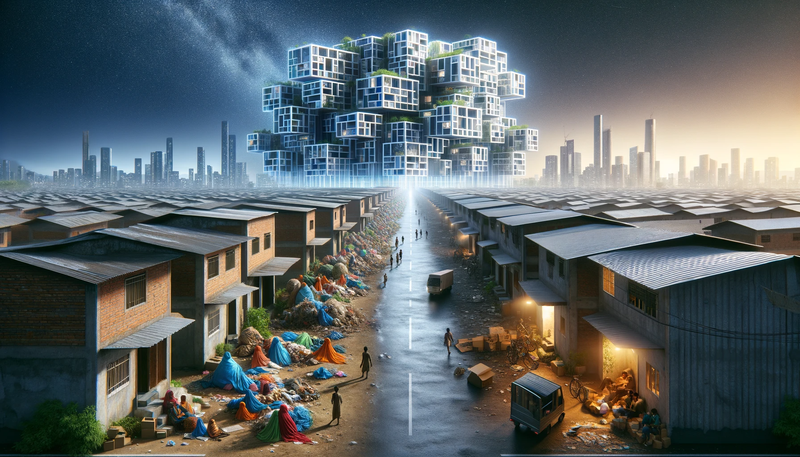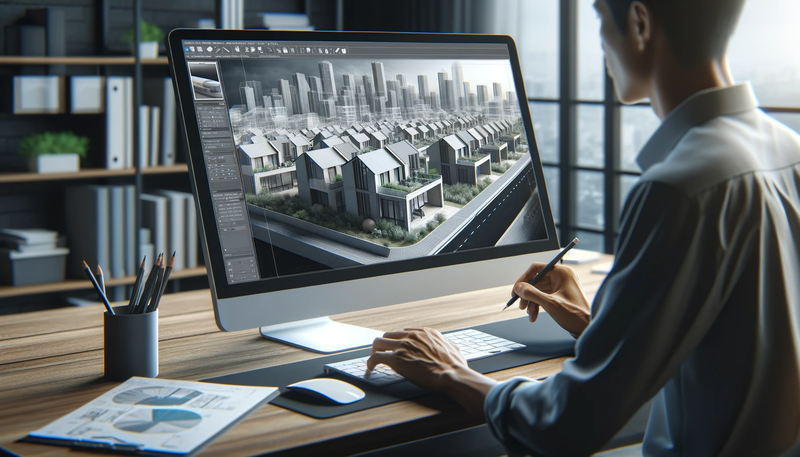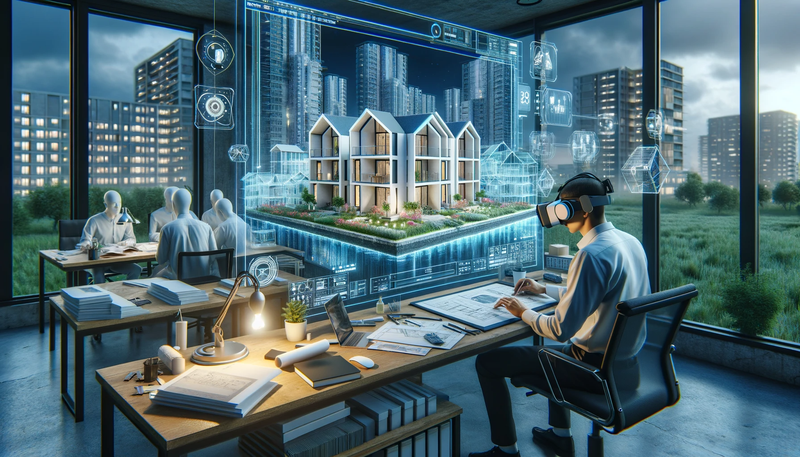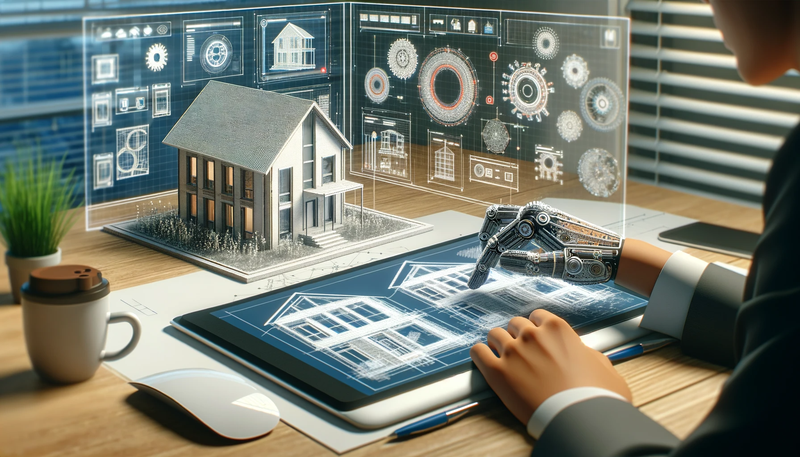Affordable Housing in 3D: Using Rendering to Drive Cost-Effective Architectural Solutions
The world is currently facing an acute and escalating affordable housing crisis. Rapid urbanization, population growth, income disparity, and a host of other socio-economic factors have converged to create a situation where a safe home–a fundamental human right–remains out of reach for millions. According to a report by the World Resources Institute, over 1.2 billion people worldwide lack access to affordable and secure housing.

In this context, the role of architecture and design is critical. As problem solvers and visionaries, architects possess the tools and knowledge to develop innovative, sustainable, and above all, affordable housing solutions. From designing for density to maximizing the use of locally sourced materials, various design strategies can significantly reduce construction and operational costs, increasing the affordability of housing.
Yet, even with the best intentions and innovative ideas, architects often face many challenges when designing affordable housing. Factors such as regulatory constraints, budget limitations, site restrictions, and community opposition can make the design and implementation process complex and challenging. In addition, conveying design concepts to non-technical stakeholders such as community members and policymakers can be difficult with traditional 2D drawings.
This is where 3D rendering–a powerful tool that creates lifelike, three-dimensional digital models–comes into play. Over the years, 3D rendering has significantly transformed the architectural field, providing architects with the ability to visualize, communicate, and change their designs with unprecedented ease and precision. This technology is not just for creating aesthetically pleasing visualizations; it also plays a crucial role in problem-solving, decision-making, and project execution.
This article explores the various ways in which 3D rendering can drive cost-effective architectural solutions for affordable housing. From streamlining the design and planning process to promoting efficient resource use and reducing construction costs, we delve into the multifaceted role of 3D rendering in tackling the global affordable housing crisis. Through real-life case studies, we show how this technology is being leveraged to create affordable homes, and we discuss the challenges and opportunities that lie ahead as we continue to integrate this digital tool into the realm of affordable housing.
Affordable Housing and Architecture

The Interplay between Architectural Design and Housing Affordability
Architectural design significantly influences housing affordability. It can dictate not only the cost of construction but also the long-term operational and maintenance costs of a housing unit. Thoughtfully designed spaces can optimize the use of materials and labour during construction and ensure energy efficiency in the long run, reducing the total cost of housing.
For example, smaller, well-designed spaces can be as functional as larger ones, effectively reducing construction costs. Similarly, the layout of a building, including the positioning of windows and insulation, can significantly influence heating and cooling costs.
In addition, architecture plays a critical role in ensuring that affordable housing is not only cost-effective but also inclusive and dignified. Good design can help avoid the stigma often associated with affordable housing, creating vibrant spaces that contribute positively to the wider community.
Existing Architectural Approaches to Affordable Housing
There are various architectural approaches to affordable housing, ranging from high-density urban apartments to low-cost rural homes. Some architects advocate for compact living solutions, such as micro-apartments and tiny homes, that minimize construction costs and efficiently use urban land. Others focus on modular and prefabricated housing, which can reduce construction time and waste, thus bringing down costs.
The growing interest in green architecture also influences affordable housing design. Passive design strategies that maximize natural lighting and ventilation, green roofs, solar panels, and energy-efficient appliances are increasingly incorporated into affordable housing projects. While these features may increase upfront costs, they often result in significant savings in energy bills over time, increasing the overall affordability of the housing unit.
Challenges Faced in Designing and Implementing Affordable Housing Solutions
Designing affordable housing comes with its own set of challenges. Regulatory constraints, such as zoning laws and building codes, can limit design possibilities. Land prices and availability can dictate the location and size of the project. Budget limitations can restrict the choice of materials and technologies. Community opposition to affordable housing, often based on misconceptions and stigma, can delay or even halt projects.
Conveying design concepts to non-technical stakeholders is another significant challenge. Traditional 2D drawings can be hard for laypeople to interpret, making it difficult for architects to communicate their visions and receive valuable feedback from community members and policymakers. This can lead to misunderstandings and missed opportunities for collaborative problem-solving.
The Role of 3D Rendering in Affordable Housing

Visualization and Communication Through 3D Rendering
3D rendering is a powerful tool that allows architects to visualize and communicate their design ideas effectively. Unlike traditional 2D drawings, 3D renderings provide a realistic, easily understandable representation of the proposed building, making it possible for non-technical stakeholders to appreciate the design's intent and nuances.
In affordable housing, 3D renderings can be especially valuable. They can help show how compact spaces can be comfortable and functional, how passive design strategies work, or how modular units come together to form a cohesive whole. This can facilitate constructive dialogue with community members, policymakers, and funders, helping address misconceptions and build support for the project.
Streamlining Design and Construction Processes
3D renderings can also contribute to a more efficient design and construction process, helping reduce the cost of affordable housing. They can help identify potential issues and make necessary adjustments during the design phase itself, saving time and money on modifications during construction. They can also inform construction logistics by visualizing construction sequences or showing where prefabricated elements will be placed.
With the help of virtual reality (VR), architects and builders can "walk" through the 3D model, gaining a better understanding of the space and making informed decisions about materials, finishes, and furnishings, which can impact the cost of the project.
Marketing and Fundraising with 3D Renderings
3D renderings can also serve as a powerful marketing and fundraising tool. By presenting a vivid image of the proposed building, they can help attract potential residents, investors, and donors, crucial for the success of affordable housing projects.
They can showcase the quality and dignity of affordable housing, challenging the negative stereotypes often associated with it. They can also illustrate the social and environmental benefits of the project, such as its contribution to community building, its alignment with sustainability goals, or its potential to revitalize neighbourhoods.
Case Study: An Affordable Housing Project Leveraging 3D Rendering
To further illustrate the value of 3D rendering in affordable housing, consider the example of an affordable housing project in a mid-sized city.
The project aimed to build a multi-story, mixed-use building with compact apartments and communal spaces. Faced with skepticism from community members and potential funders, the architect turned to 3D rendering to bring the design to life. The renderings depicted the smart use of space within the apartments, the shared amenities, and the building's integration with the surrounding neighbourhood. They also simulated the building's energy performance, demonstrating the expected savings in utility bills.
The 3D renderings were presented at community meetings, used in fundraising campaigns, and included in planning applications. They helped turn the tide of opinion in favour of the project, secured necessary funding, and facilitated a smooth planning approval process. The project was completed and has since been hailed as a model for affordable housing in the region.
Application of Advanced 3D Rendering Techniques in Affordable Housing Projects

Photorealistic Renderings
Photorealistic 3D renderings can make a significant difference in understanding how the proposed project will look upon completion. They allow architects and developers to experiment with different materials, colours, and textures to optimize aesthetic appeal and cost-effectiveness. For affordable housing, it's crucial to balance maintaining affordability and ensuring the housing units are inviting and pleasant places to live.
Virtual Reality (VR) and Augmented Reality (AR)
VR and AR technologies provide immersive experiences and deeper insights into proposed designs. They allow architects, clients, and stakeholders to virtually tour the property before construction begins, experiencing the size, layout and overall feel of the spaces. This can be an excellent tool for making design alterations early, reducing costly changes during construction.
BIM and 3D Rendering
Building Information Modelling (BIM) is an intelligent 3D model-based process that gives architecture, engineering, and construction (AEC) professionals the insights and tools to efficiently plan, design, construct, and manage buildings. By using BIM in tandem with 3D rendering, architects can create more accurate models, saving time and reducing errors. This can be beneficial for affordable housing projects, where cost control is of utmost importance.
The Future of Affordable Housing and 3D Rendering

As technology advances and becomes more accessible, it's expected that 3D rendering will become even more integral to the design and construction of affordable housing. The emergence of AI and machine learning can help automate and streamline many aspects of 3D rendering, reducing the time and cost involved.
As the world grapples with housing affordability issues, innovative approaches like 3D printing of homes are becoming more workable. 3D renderings will play a crucial role in these developments, aiding in the design of 3D-printed homes and communicating these concepts to a wider audience.
Conclusion
Using 3D rendering in affordable housing offers immense potential. It can facilitate more effective communication, enable better design decisions, streamline the construction process, and help market and fundraising efforts. By leveraging these benefits, architects and developers can drive cost-effective solutions that address the urgent need for affordable housing while ensuring these homes are comfortable, sustainable, and conducive to a high quality of life.
As we look towards the future, integrating 3D rendering technologies into affordable housing projects will undoubtedly continue to evolve. It will shape not only the way we design and build but also the way we perceive and experience our built environment.
The affordable housing crisis is a complex issue that requires multifaceted solutions. But with tools like 3D rendering at our disposal, we are better equipped to rise to the challenge, innovate, and build a future where everyone has a place to call home.
Our Services
View some of our most popular services below.











